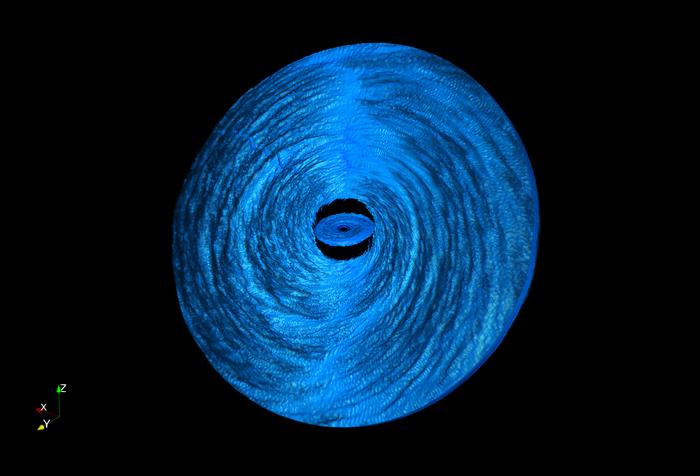Don't get too excited, this is still a computer simulation about theoretical physics, which isn't out there with science-fiction but is limited by the fact that we know very little about black holes - including how fast they consume the universe around them. The new estimate is that a black hole can tear apart space-time and consume the accretion disk of material around it in months, rather than the hundreds of years that some believe.
Such a dramatic decrease in time for a black hole to tear through its inner and outer sub-disks of matter would explain why objects like quasars flash so briefly, according to the authors. The reason they believe they are closer to correct than others is because they embrace the chaos. If accretion disks are shaped by unimaginable gravitational pull they will become ordered and descend into the maw of the thing in the same direction of the black hole’s spin. In an orderly milieu it could take hundreds or thousands of years for the gas to enter.

Credit: Nick Kaaz/Northwestern University
The authors say gravity at the very large scale won't create that kind of order, it will be turbulent. They believe they can reasonably speculate about things others could not because of advancements in processing power that allow them to include parameters unreasonable before. That is probably true, if you want to model something uniform, you can create a boundary condition and assume some linear behavior beyond it because it is unimportant. If you want to know when a table will break, you don't need precision three feet into space beyond it.
Except for the distances we're at, black holes don't have a known area where things are predictable. Despite black holes sucking everything in, the universe is expanding. And speeding up. There is no way to model both gravity pulling things together and a mystery force driving everything apart. Even this model is limited. Their general relativistic magnetohydrodynamics simulation is still just a thin accretion disk, not what exists near a black hole. And modeling that with accuracy is a challenge, limited by what we can infer. They call the effect of this obscenely high gravity frame dragging but you can think of it like centripetal force, except with multiple sub-disks all doing their own.
Friction that exists where we are wants to keep things together, but it's all being twisted by space-time, and not in a predicable way. That is why the authors think they can explain changing-look quasars, which cosmologically speaking burn and fade in the blink of an eye.




Comments